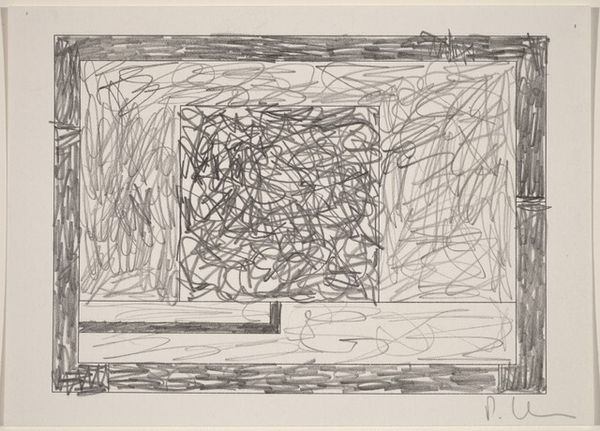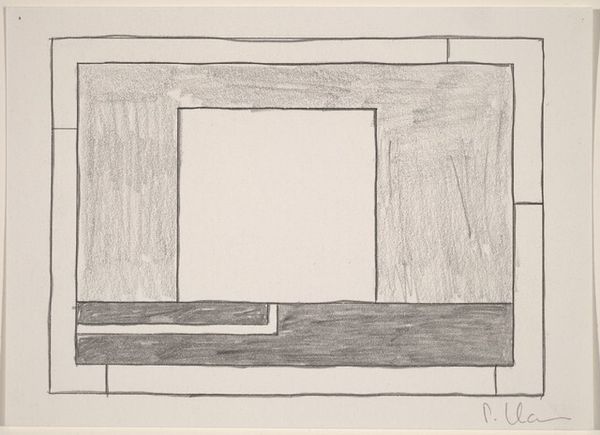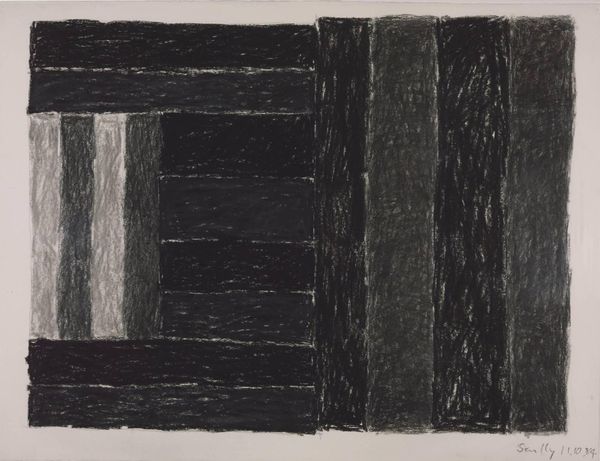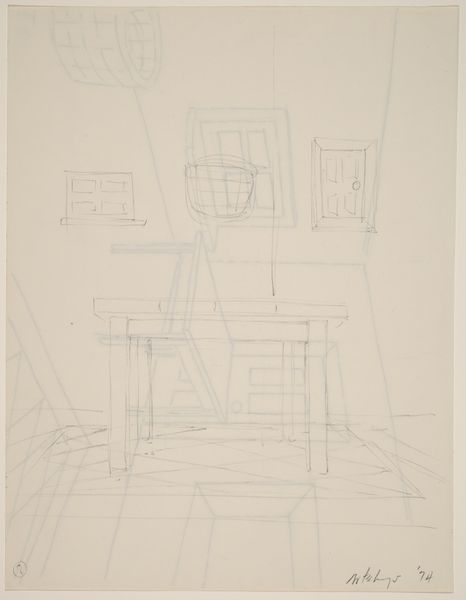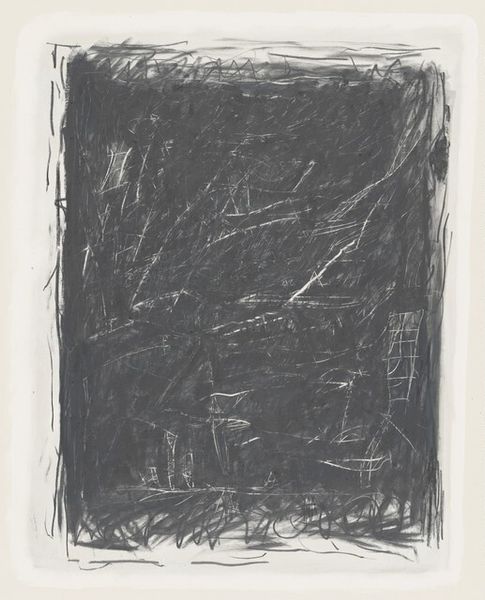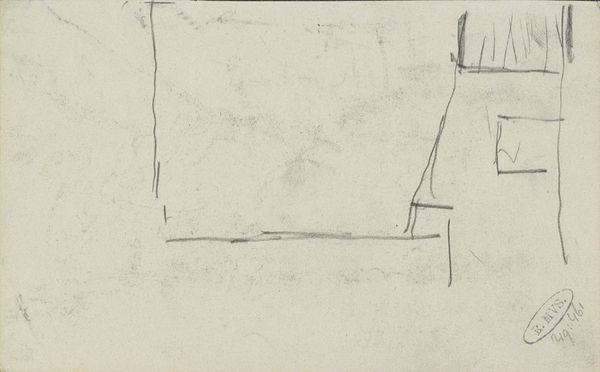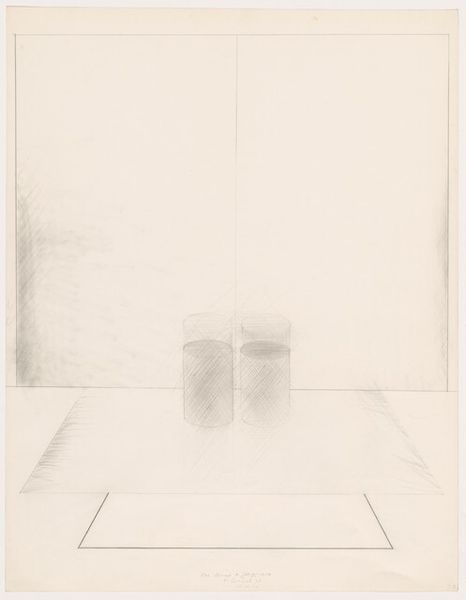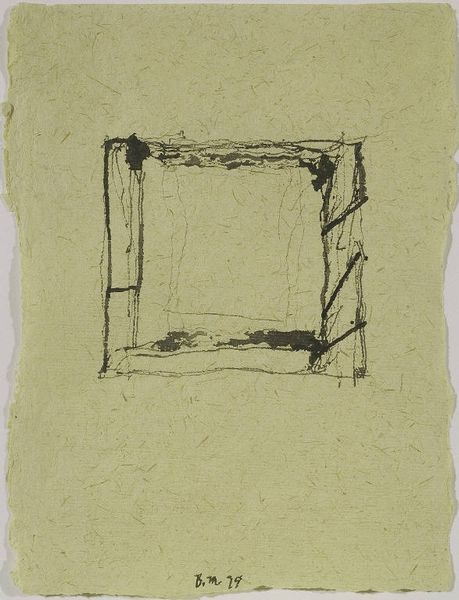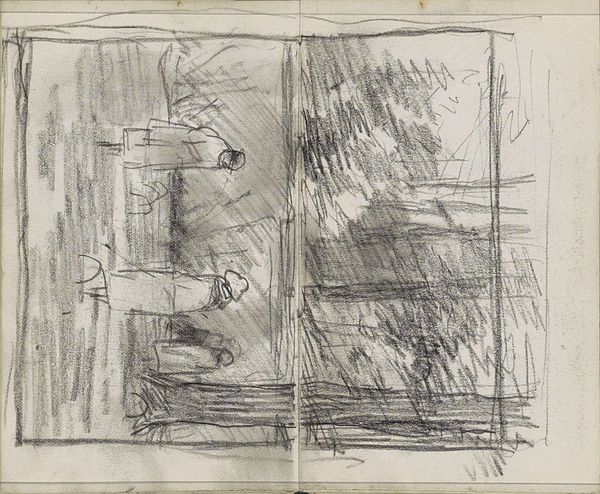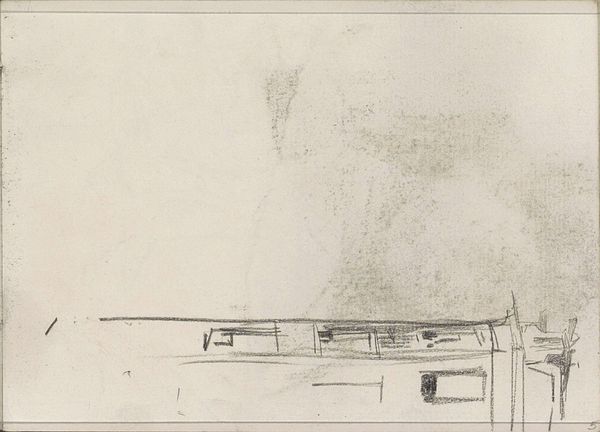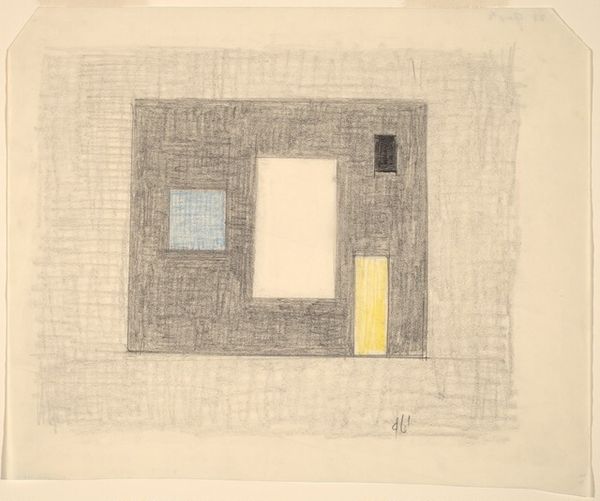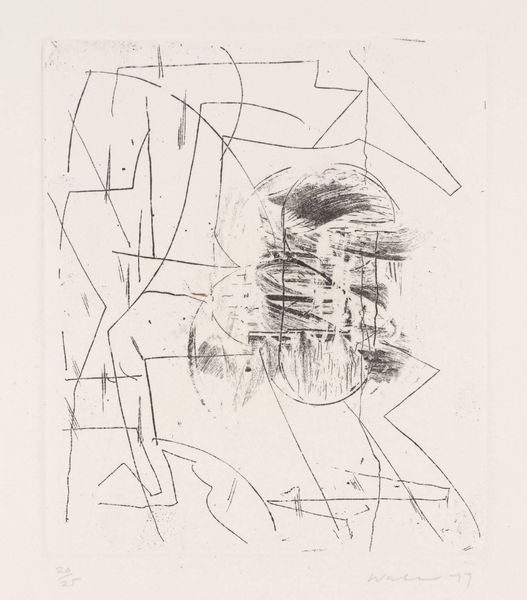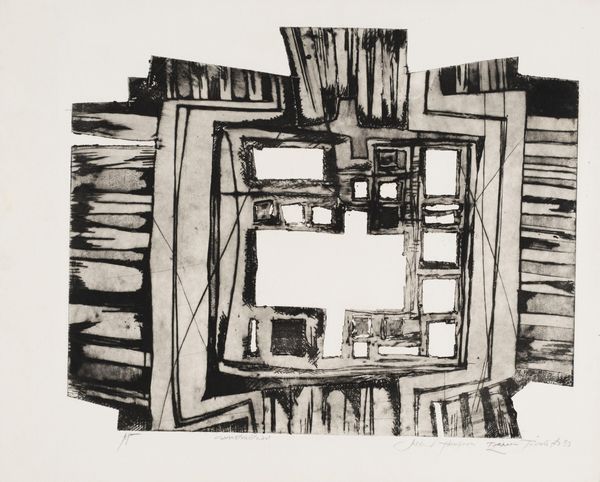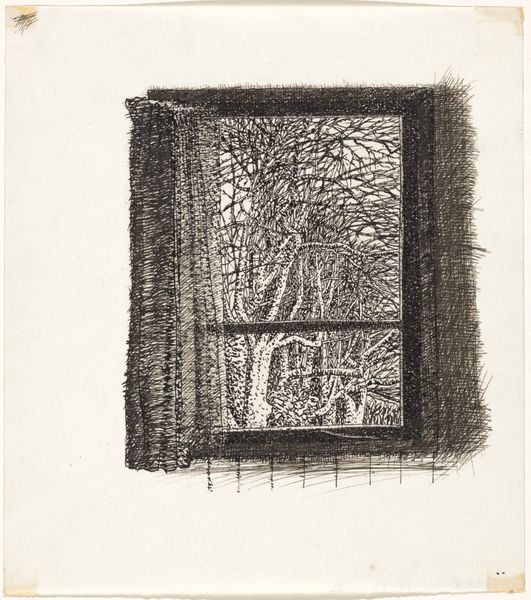
Dimensions: overall: 12.7 x 18.1 cm (5 x 7 1/8 in.)
Copyright: National Gallery of Art: CC0 1.0
Editor: Here we have Peter Halley's "Cell 5" from 1995, a drawing created with pencil and graphite. The geometry and starkness of it give off a really sterile, almost architectural vibe, like a blueprint. What do you make of it? Curator: It's a fascinating example of Halley’s exploration of geometric abstraction and its potential for social commentary. Notice the contrast between the sharp, defined lines of the "cell" structure, and the chaotic, scribbled interior. This tension between order and disorder is key. Editor: Order and disorder, interesting! So, it’s not just about the shapes themselves? Curator: Precisely. We can view this through a structuralist lens, where the 'cell' represents a system, perhaps a social or institutional one. The scribbles within disrupt the clarity of the system. The medium itself is telling, though executed using pencil, Halley alludes to other systems of meaning such as architectural planning, which tends to signify the control of human beings in space. Editor: How does this all relate to postmodernism? Curator: Postmodernism often critiques grand narratives and seeks to deconstruct established power structures. Halley does so here by visually representing the tension between controlled systems and the messiness of reality. The drawing itself rejects the idea of art having any one singular reading; there is a dialectic here between order and disorder. Editor: It's making me see the drawing as less of a simple geometric composition and more of a complex statement. It makes me want to understand his full series of Cells! Curator: Exactly. By focusing on form and structure, we begin to access a deeper, more nuanced understanding of Halley’s artistic intention.
Comments
No comments
Be the first to comment and join the conversation on the ultimate creative platform.
